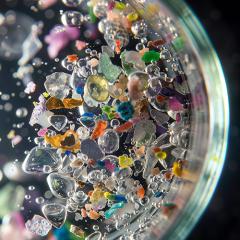Research by a team at The University of Queensland (UQ) led to sweeping changes to global pesticide regulations.
The UQ team’s findings led to widespread overhauls of pesticide usage in Australia, New Zealand, the US and Canada as well as changes to the United Nations’ guidelines on pollutants.
Despite a long-term ban on their use in pesticides, dioxins – some of the world’s most dangerous man-made toxins and linked to a range of cancers – were still being detected in Australian soil, sediment, plants and animals.
A UQ team discovered that the source of these dioxins was many common pesticides sprayed on food crops, parks, turf farms and nurseries.
The researchers discovered that dioxin impurities were formed during the manufacturing process of these pesticides and often increased when the pesticides were used in sunlight.
Their research changed regulations governing use of pesticides, reducing the risk of adverse effects for people, wildlife and the environment.
Background
Dioxins are toxic compounds that cause adverse health effects in humans and wildlife. Since 2004, use of these toxins has been managed under the United Nations International Stockholm Convention Treaty, which aims to eliminate or restrict the production and use of persistent organic pollutants (POPs) to protect human health and the environment.
Despite worldwide restrictions on the use of POPs, including pesticides containing dioxins, the contaminant was still being detected in Australian soil, sediments and plants and wildlife.
In 2002 a team from UQ’s National Research Centre for Environmental Toxicology (ENTOX), led by Associate Professor Caroline Gaus, discovered that the source of these dioxins was common pesticides, which contained dioxin impurities formed during the manufacturing process and often exacerbated by sunlight.
The UQ team’s analysis of 23 different pesticide formulations, including insecticides, herbicides and fungicides, detected dioxins in all samples, including some commonly used products.
The highest dioxin concentrations were found in the fungicide pentachloronitrobenzene (PCNB). Levels detected were similar to those found in banned pesticides including the key ingredient of Agent Orange.
After bringing their findings to the attention of Australian Pesticides and Veterinary Medicines Authority (APVMA), Associate Professor Gaus and her team worked with the APVMA to address the issue and, in 2010, all products containing PCNB or Quintozene were suspended.
Similar suspensions based on the UQ research were then made in the United States, Canada and New Zealand.
In 2009 the team’s presentation of their findings to the United Nations Environment Program (UNEP) saw the revision of the UNEP’s guidelines regarding dioxins and has had a major impact on international action plans to evaluate, reduce and eliminate releases of POPs, including dioxins.



